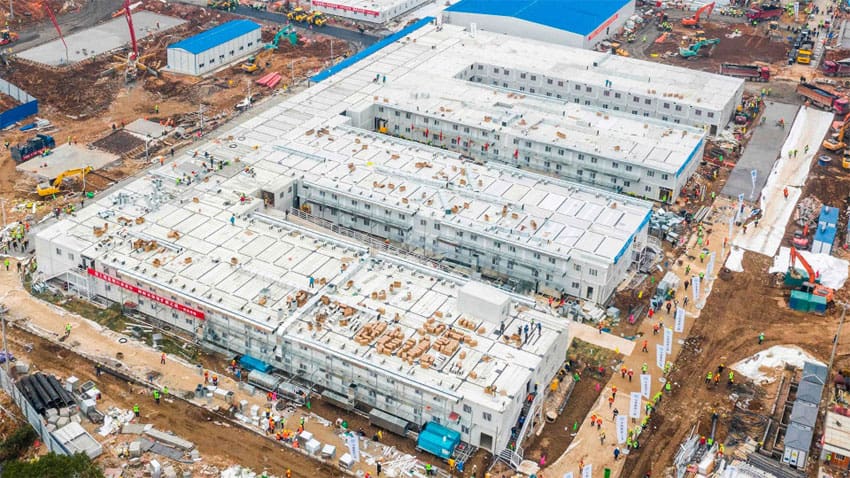BEIJING – China on Monday opened a hospital built in record ten-day time for treatment of patients infected by deadly coronavirus in Wuhan.
The first 1,000-bed hospital in Wuhan, Hubei province, began receiving highly contagious pneumonia patients on Monday, less than 10 days after construction began. The new facility will ease the shortage of beds in the city resulting from an increasing number of patients infected with the novel coronavirus.
Medical personnel from the People’s Liberation Army will take over the new Huoshenshan Hospital started receiving and treating patients, according to China Daily.
A second special hospital for the treatment of the novel coronavirus – Leishenshan Hospital – is under construction in Wuhan. It is expected to be completed on Wednesday and start receiving patients the following day.
The military assistance was approved by President Xi Jinping, who is also general secretary of the Communist Party of China Central Committee and chairman of the Central Military Commission.
Huoshenshan Hospital, with a floor area of 25,000 square meters, will deal primarily with patients who have confirmed coronavirus infection. It is a copy of Beijing Xiaotangshan Hospital, which was built in seven days in a Beijing suburb in April 2003 during the outbreak of severe acute respiratory syndrome. Its purpose was exclusively to treat SARS patients, and it played a key role in prevention and control of the deadly disease.
Construction of Huoshenshan Hospital, in suburban Wuhan, formally started on January 25 to cope with the rapidly increasing number of people infected with the coronavirus.

At the peak of the massive construction project, more than 4,000 workers and about 1,000 construction machines and trucks were on the site. The majority of the 1,400 medical personnel who will treat patients in the hospital come from hospitals administered by the PLA Joint Logistic Support Force, with others from PLA Ground Force Medical University, PLA Navy Medical University and PLA Air Force Medical University.
Fifteen experts from the PLA Center for Disease Control and Prevention and the PLA Academy of Military Science’s Military Medical Institute will join them to offer professional consultation.
Many personnel involved in this operation, the largest mobilization of the PLA’s medical forces since the devastating earthquake in Sichuan province in May 2008, are experienced in handling infectious diseases because they took part in fights against the 2003 SARS outbreak in China and the Ebola epidemic in western Africa in 2014.
Bai Xuejian, a publicity officer from China Construction Third Engineering Bureau Co, a leading builder of the hospital, said the company was given the task by the authorities in Wuhan on Jan 23, with construction formally beginning two days later.
To ensure timely completion, construction work was done in shifts 24 hours a day. Strict disease control and prevention measures such as requiring workers to wear masks and sterilization of the whole construction site were enforced, he said.
The construction process of both new hospitals has been livestreamed online every day since the start of the projects. The livestreaming videos provide a bird’s-eye view of the construction sites, with workers, excavating machines and trucks racing to make the deadline.
Also on Sunday, the PLA Air Force used eight of its large transport planes to ferry medical personnel and supplies from the military to Wuhan to aid with disease prevention and control.
The eight aircraft, from an aviation division of the Air Force branch of the PLA Central Theater Command, landed at Wuhan Tianhe International Airport in Hubei province with 795 medical personnel from the armed forces and 58 metric tons of equipment and materials. They came from Shenyang, Lanzhou, Guangzhou and Nanjing.
It was the largest non-military operation of the Air Force’s transport fleet since April 2010, when many planes were deployed for earthquake aid in Qinghai province, according to the Air Force.
Meanwhile, death toll from Coronavirus in China has risen to 360 surpassing the number of fatalities of SARS crisis two decades ago. The World Health Organization has declared the crisis a global health emergency, and the first foreign death from the virus has been reported in the Philippines.














